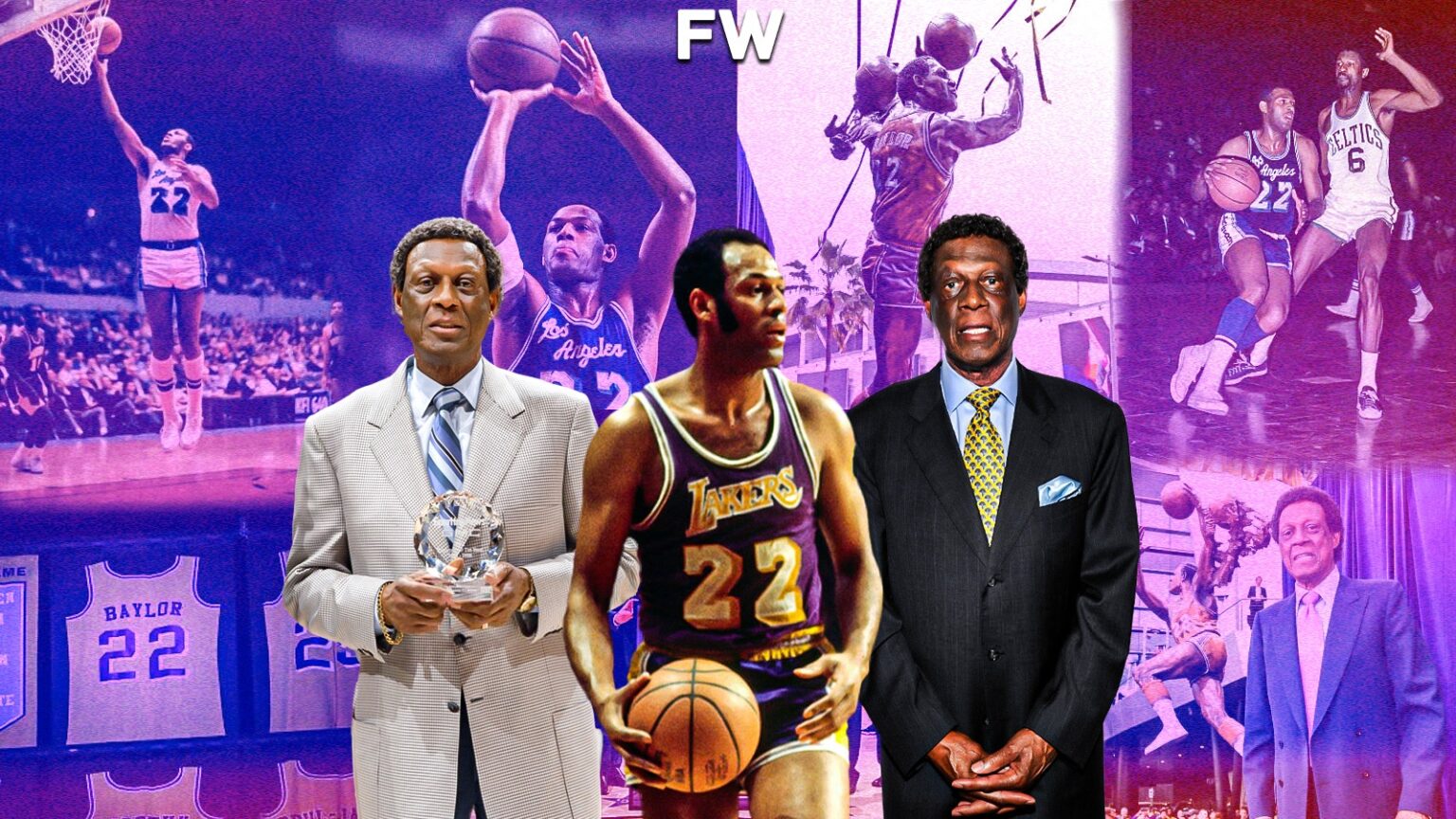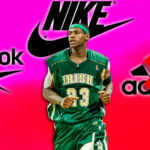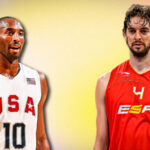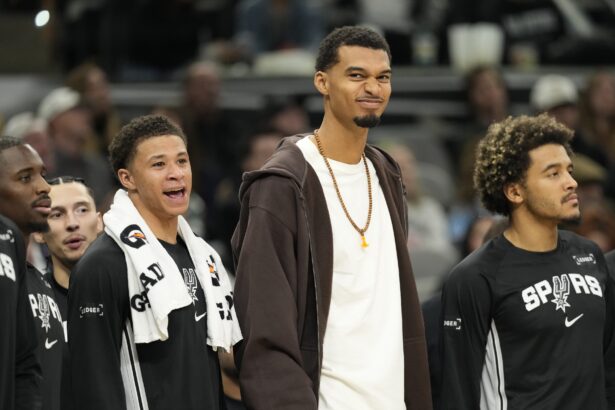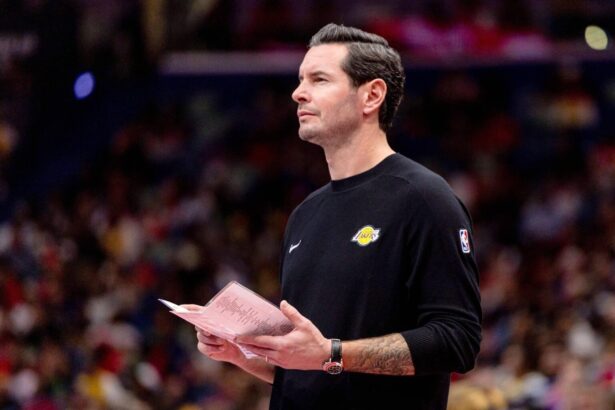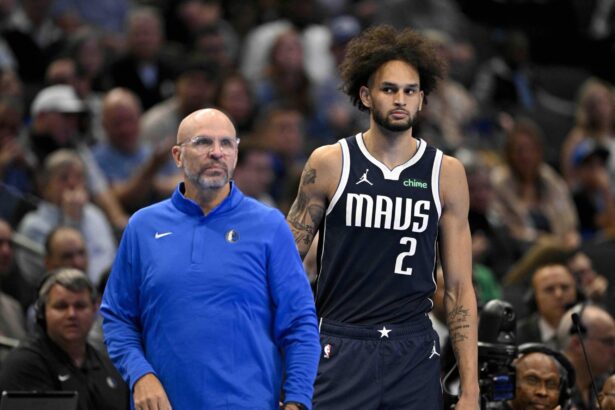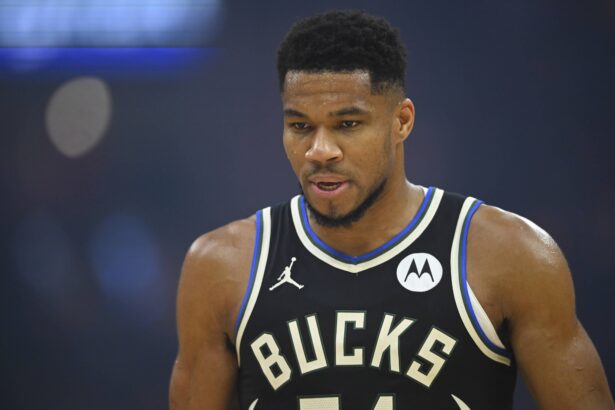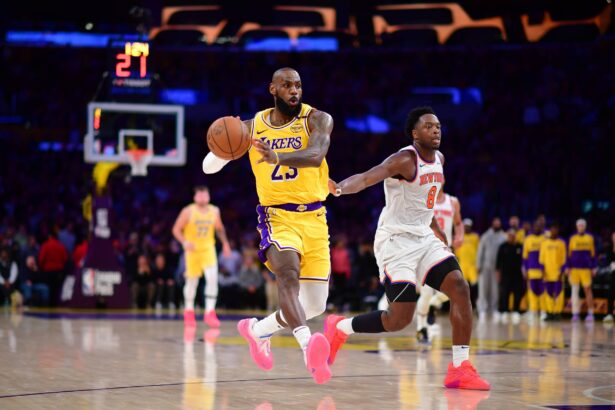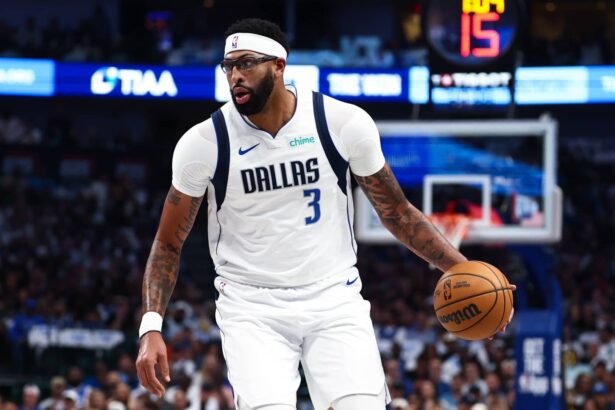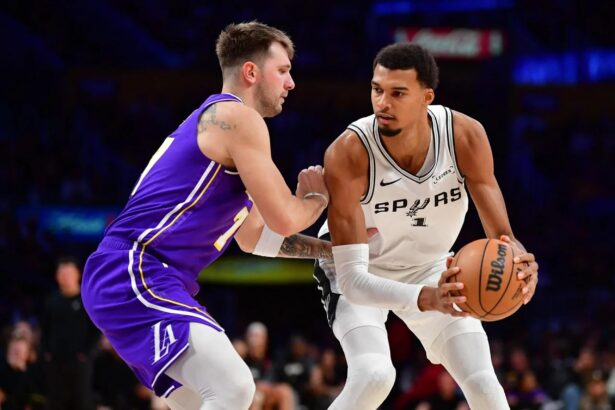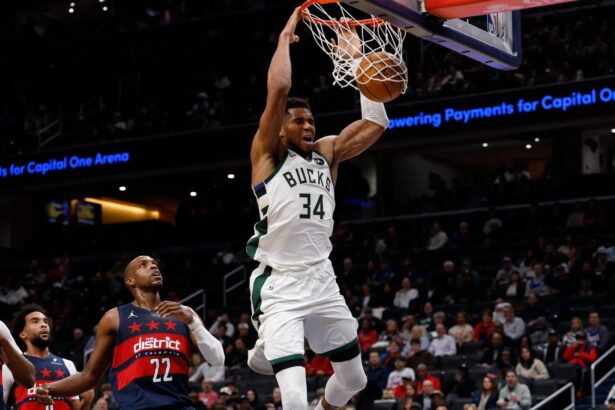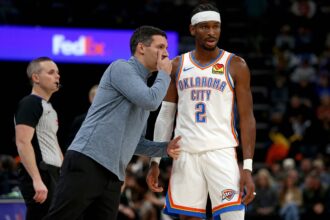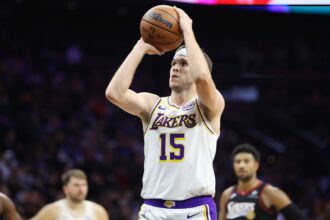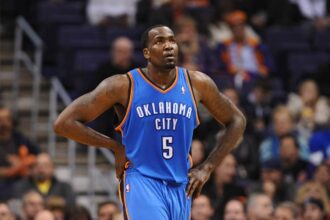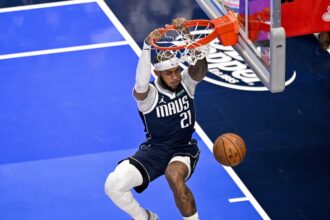- Elgin Baylor averaged 27.4 points, 13.5 rebounds, and 4.3 assists per game over the course of his career
- Baylor played only on the weekends for the Lakers during the 1961-62 season, as he was on active duty for the United States Army
- Baylor holds the record for most points scored in a Finals game with 61
Elgin Baylor was one of the greatest basketball players of his time, known for his incredible athleticism, scoring ability, and style of play. Even with being one of the greatest talents in league history, Baylor is often forgotten by younger fans.
- The Early Life Of Elgin Baylor
- Baylor Becomes An NBA Star
- Elgin Baylor’s Post-Playing Career And Life
- Next
- Wilt Chamberlain Biography: The Life, Career, And Legend Of The Most Dominant NBA Player Ever
- Magic Johnson Biography: How The NBA’s Greatest Passer Defeated A Deadly Illness To Become A Successful Businessman
- The Biography Of The G.O.A.T.: Michael Jordan
- LeBron James: The Biography Of The NBA’s King
- Kobe Bryant Biography: The Life Of The Black Mamba
When fans and analysts today talk about the greatest players of all time, like who is in the top 10 or who is in the G.O.A.T. debate, Baylor’s name is never brought up, which is a shame.
In today’s article, we’ll dive deep into the life and career of the great Elgin Baylor. The older generation respects Baylor and his game. Maybe after reading this article, the younger generation will, as well.
Without further ado, Fadeaway World presents the biography of Elgin Baylor.
The Early Life Of Elgin Baylor
Elgin Baylor was born on September 16, 1934, in Washington, D.C. Baylor grew up in a time when racial segregation was still the norm in many parts of the United States.
Despite the many obstacles he faced as a young Black man in America, Baylor showed remarkable resilience and determination, both on and off the basketball court. Baylor’s childhood was marked by poverty and hardship. His father worked as a deliveryman while his mother was a homemaker.
The family struggled to make ends meet, and Baylor often had to wear hand-me-down clothes and shoes that were too big for him. Despite these challenges, Baylor showed an early interest in basketball and quickly demonstrated a remarkable talent for the sport.
He began playing basketball in local parks and schoolyards, honing his skills by practicing for hours on end. As he grew older, Baylor began playing for Phelps Vocational High School, a segregated school and played for two years, averaging 18.5 in his first season and 27.6 points per game in his second season.
Baylor struggled with his grades, and eventually, he dropped out of school after his junior year and worked different odd jobs. While doing this, Baylor continued to play recreational basketball.
In 1954, Baylor returned to school, this time Spingarn High School, at the age of 20, and he excelled not only at basketball but at other sports as well, including football and track.
Baylor was a star athlete in high school and led his basketball team to the city championship in his senior year. Baylor’s impressive skills on the court caught the attention of college recruiters, and he received offers from several top universities.
After considering several options, Baylor decided to attend the College of Idaho, a small school in Caldwell, Idaho, where he played college basketball for one year. He was a dominant player at the college level, averaging 31.3 points and 19.5 rebounds per game, but he felt homesick and decided to transfer to Seattle University after his sophomore year.
Baylor had to work part-time jobs to help pay for his expenses and support his family back home, but despite these challenges, Baylor continued to excel on the basketball court, leading Seattle University to the NCAA championship game in 1958. In the championship game, Seattle lost 84-72 to Kentucky, despite Baylor scoring 25 points and adding 19 rebounds.
At Seattle University, Baylor averaged 31.2 points and 19.8 rebounds per game in his two seasons. Baylor’s success at the college level earned him much interest from NBA teams, and there was no doubt he’d be one of the top picks in the 1958 NBA Draft.
Baylor Becomes An NBA Star
Baylor would be selected first overall by the Minneapolis Lakers. As a rookie, Baylor averaged 24.9 points, 15.0 rebounds, and 4.1 assists per game.
The year prior to Baylor’s arrival, the Lakers had a 19-53 record, the worst in the league. In his rookie season, the Lakers finished with a 33-39 record, second in the Western Division, as Baylor won the Rookie of the Year award.
Over the course of his career, Baylor became known for his incredible athleticism, his ability to drive to the basket, and his remarkable scoring ability. Still, Baylor saw many obstacles in his career, including ones off the court.
The 1961-62 season would see Baylor as a part-time player, or what was known as a “weekend warrior.” Baylor was in the United States Army and on active duty right when the Cold War was heating up.
The US Army called up many reserves to prepare for a possible defense against any attack by the Soviet Union, and Baylor was one of them. Because of this, Baylor missed a lot of games during the 1961-62 season. Baylor was stationed at Fort Lewis in Washington state and was only allowed to play in NBA games during the weekend (hence the weekend warrior nickname).
Even with playing only on the weekends, Baylor still participated in 48 games, and he completely dominated when he did play. Baylor averaged a career-high 38.3 points per game in his 48 games, with 18.6 rebounds and 4.6 assists to go along with his points.
#HappyVeteransDay to all who served.
My Sophomore basketball coach was college roommates and teammates with Elgin Baylor and Elgin showed up to one of our practices and told us about this season. What a thrill it was to meet him.
He could not have been a nicer guy to us. pic.twitter.com/Nc7tmf7IPN
— S Woolley Kimball 🇵🇸🇮🇱🇨🇭 (@NotYourBishop) November 11, 2022
In the 48 games that Baylor played in, the Lakers went 37-11. The Lakers finished the season with a 54-26 record, the best in the Western Division.
By playoff time, Baylor was granted extended leave by the US Army, meaning he’d be available for every playoff game for the Lakers. The 1962 playoffs would be special for Baylor, as he led the Lakers to the NBA Finals.
Baylor’s Lakers faced off against the Bill Russell-led Boston Celtics in a memorable seven-game series. Although the Lakers ultimately lost to the Celtics in the Finals, Baylor’s performance was extraordinary. He averaged 40.6 points, 17.9 rebounds, and 3.7 assists per game.
Baylor’s best game came in Game 5, where he set an NBA Finals record that still stands today with 61 points in the Lakers’ 126-121 victory. Baylor also added 22 rebounds in the game and shot 22-46 from the field.
Baylor put up huge numbers in his career, like his 38.3 points per game average in 1961-62. He also had averages of 34.8 (1960-61), 34.0 (1962-63), and 29.6 points per game (1959-60), but Baylor never led the league in scoring, thanks to playing the same time as a prime Wilt Chamberlain.
Baylor’s career, despite having great performances, was also hit with the injury bug and failure at the highest stage. In Game 1 of the Western Division Finals vs. the Baltimore Bullets, Baylor severely injured his knee after only five minutes of play.
Baylor’s injury required surgery, and he missed the remainder of the playoffs, including the Finals, where the Lakers lost to the Celtics 4-1. For the remainder of his career, Baylor would deal with knee problems, eventually having surgery on both knees.
Baylor played in two games in the 1970-71 season and ruptured his Achilles tendon. He’d play just nine games in the 1971-72 season before retiring from the game. This turned out to be an unfortunate decision.
In his career, Baylor reached seven NBA Finals, and his Lakers lost all seven of those Finals. Baylor’s final season, the 1971-72 season, saw the Lakers win the NBA title, defeating the New York Knicks 4-1.
Even though Baylor was part of the team at the beginning of the season, he did not receive credit for winning the NBA championship. So, Baylor ended his 14-year career without winning a championship. The Lakers organization did give Baylor a championship ring after the season, which was the right thing to do.
Baylor had an incredible career, finishing with career averages of 27.4 points, 13.5 rebounds, and 4.3 assists per game. Baylor was an 11x All-Star, and he won the 1959 All-Star Game MVP (co-MVP with Bob Pettit) when he scored 24 points while adding 11 rebounds.
Baylor was also named to 10 All-NBA First Teams, and he was named to the NBA’s 35th, 50th, and 75th-anniversary teams. In 1977, Baylor was inducted into the Naismith Basketball Hall of Fame.
Elgin Baylor’s Post-Playing Career And Life
After Baylor retired from the NBA, he found other careers in the association. In 1974, Baylor became an assistant coach with the New Orleans Jazz. Baylor would take over as head coach halfway through the 1976-77 season.
Baylor would coach up until the 1978-79 season before being fired. In his coaching career, Baylor’s Jazz went only 86-135.
In 1986, Baylor found himself back in the league, this time as the vice president of basketball operations for the Los Angeles Clippers. Baylor stayed as vice president of basketball operations for the Clippers until 2008.
In 2006, Baylor was named the Executive of the Year for his role with the Clippers. After leaving the Clippers, which happened because he was fired, Baylor filed an employment discrimination lawsuit against the Clippers, citing he was fired because of his age and race.
Baylor eventually dropped the racial discrimination claims in the suit but went ahead with the lawsuit claiming he was fired because of his age. A jury favored the Clippers in the case, citing Baylor was fired because of the Clippers’ poor record during his tenure.
After this, Baylor stayed out of the news and lived a quiet life. On March 22, 2021, Baylor peacefully passed away from natural causes. Baylor was 86 years old.
Despite the many obstacles he faced in his childhood, Baylor’s determination and hard work allowed him to achieve great success both on and off the basketball court. He remains an inspiration to millions of people worldwide, and his legacy as one of the greatest basketball players of all time continues to endure to this day.
We sincerely appreciate and respect you as a reader of our site. It would help us a lot if you follow us on Google News because of the latest update.
Thanks for following us. We really appreciate your support.

